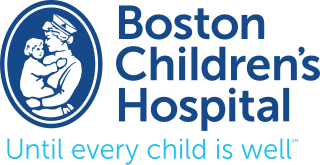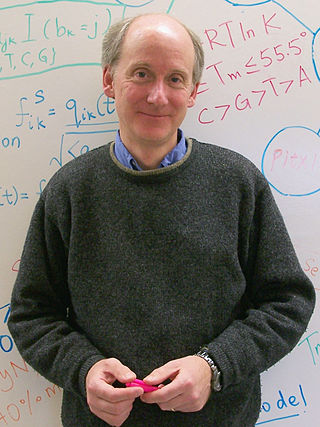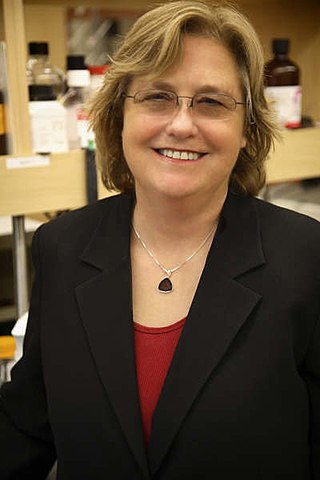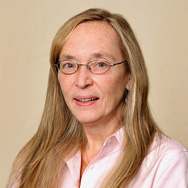Related Research Articles

Oct-4, also known as POU5F1, is a protein that in humans is encoded by the POU5F1 gene. Oct-4 is a homeodomain transcription factor of the POU family. It is critically involved in the self-renewal of undifferentiated embryonic stem cells. As such, it is frequently used as a marker for undifferentiated cells. Oct-4 expression must be closely regulated; too much or too little will cause differentiation of the cells.


James Alexander Thomson is an American developmental biologist best known for deriving the first human embryonic stem cell line in 1998 and for deriving human induced pluripotent stem cells (iPS) in 2007.

John Edgar Dick is Canada Research Chair in Stem Cell Biology, Senior Scientist at the Princess Margaret Cancer Centre, University Health Network and Professor in the Department of Molecular Genetics at the University of Toronto in Canada. Dick is credited with first identifying cancer stem cells in certain types of human leukemia. His revolutionary findings highlighted the importance of understanding that not all cancer cells are the same and thus spawned a new direction in cancer research. Dick is also known for his demonstration of a blood stem cell's ability to replenish the blood system of a mouse, his development of a technique to enable an immune-deficient mouse to carry and produce human blood, and his creation of the world's first mouse with human leukemia.
Douglas A. Melton is an American medical researcher who is the Xander University Professor at Harvard University, and was an investigator at the Howard Hughes Medical Institute until 2022. Melton serves as the co-director of the Harvard Stem Cell Institute and was the first co-chairman of the Harvard University Department of Stem Cell and Regenerative Biology. Melton is the founder of several biotech companies including Gilead Sciences, Ontogeny, iPierian, and Semma Therapeutics. Melton holds membership in the National Academy of the Sciences, the American Academy of Arts and Sciences, and is a founding member of the International Society for Stem Cell Research.

Shinya Yamanaka is a Japanese stem cell researcher and a Nobel Prize laureate. He is the former director of Center for iPS Cell Research and Application and a professor at the Institute for Frontier Medical Sciences at Kyoto University; as a senior investigator at the UCSF-affiliated Gladstone Institutes in San Francisco, California; and as a professor of anatomy at University of California, San Francisco (UCSF). Yamanaka is also a past president of the International Society for Stem Cell Research (ISSCR).

In cell biology, a precursor cell, also called a blast cell or simply blast, is a partially differentiated cell, usually referred to as a unipotent cell that has lost most of its stem cell properties. A precursor cell is also known as a progenitor cell but progenitor cells are multipotent. Precursor cells are known as the intermediate cell before they become differentiated after being a stem cell.
Allen Charles Edward Eaves is the founding Director of the Terry Fox Laboratory for Hematology/Oncology Research, which over a 25-year period (1981–2006) he grew into an internationally recognized centre for the study of leukemia and stem cell research. His own research on chronic myelogenous leukemia (CML) has led the way to a new understanding of the disease. As Head of Hematology at the British Columbia Cancer Agency and the University of British Columbia for 18 years (1985–2003) he engineered the building of one of the first and largest bone marrow transplant programs in Canada. In recognition of his research accomplishments and leadership in moving basic science discoveries in stem cell biology into the clinic, he was elected President of the International Society of Cellular Therapy (1995–1997), Treasurer of the Foundation for the Accreditation of Cellular Therapy (1995–2002) and President of the American Society of Blood and Marrow Transplantation (1999–2000). In 2003 he was awarded the prestigious R. M. Taylor Medal by the Canadian Cancer Society and the National Cancer Institute of Canada.

Cell potency is a cell's ability to differentiate into other cell types. The more cell types a cell can differentiate into, the greater its potency. Potency is also described as the gene activation potential within a cell, which like a continuum, begins with totipotency to designate a cell with the most differentiation potential, pluripotency, multipotency, oligopotency, and finally unipotency.

George Quentin Daley is the Dean of the Faculty of Medicine, Caroline Shields Walker Professor of Medicine, and Professor of Biological Chemistry and Molecular Pharmacology at Harvard Medical School. He was formerly the Robert A. Stranahan Professor of Pediatrics at Harvard Medical School, Director of the Stem Cell Transplantation Program at Boston Children's Hospital, and an investigator of the Howard Hughes Medical Institute, Associate Director of Children's Stem Cell Program, a member of the Executive Committee of the Harvard Stem Cell Institute. He is a past president of the International Society for Stem Cell Research (2007–2008).

Chung Hyung-min is a South Korean biotechnology professor. He was appointed professor at CHA University in 1997 after obtaining his BA, MA and Ph.D degree at Konkuk University.
Stephen H. Tsang is an American ophthalmologist and geneticist. He is currently a Professor of Ophthalmology, and Pathology and Cell Biology at Columbia University Irving Medical Center in New York.

Jeanne Frances Loring is an American stem cell biologist, developmental neurobiologist, and geneticist. She is the founding Director of the Center for Regenerative Medicine and emeritus professor at the Scripps Research Institute in La Jolla, California. She has founded two biotechnology companies, Arcos BioScience (1999) and Aspen Neuroscience (2018)
Carla Faith Bender Kim is a professor at the Department of Genetics at Harvard Medical School and a Principal Investigator at the Stem Cell Program at Boston Children’s Hospital. She is also a Principal Faculty member at the Harvard Stem Cell Institute, where she also serves as part of the Executive Committee.

Derrick J. Rossi, is a Canadian stem cell biologist and entrepreneur. He is a co-founder of the biotechnology company Moderna.
Joel Naom Hirschhorn is an American human geneticist, pediatrician, and endocrinologist. He is known for his research on the genetics of complex human traits, such as height.

Pamela Gehron Robey is an American cell biologist. She is a senior investigator in the skeletal biology section at the National Institute of Dental and Craniofacial Research.
Paola Arlotta is the Golub Family Professor of Stem Cell and Regenerative Biology at Harvard University and chair of the Harvard Stem Cell and Regenerative Biology (HSCRB). Her research focuses on the development of neuron types in the cerebral cortex. She is best known for her work using 3D cerebral organoids derived from human induced pluripotent stem cells (iPSCs) to study cortical development in neurodegenerative and neuropsychiatric disorders.
Samira Musah is an American biomedical engineer and professor at the Duke University Pratt School of Engineering. She is known for her work in biomimetic systems, in particular for her work in developing an organ-on-a-chip model of the kidney glomerulus during her postdoctoral fellowship.
Nissim Benvenisty is Professor of Genetics, the Herbert Cohn Chair in Cancer Research and the Director of “The Azrieli Center for Stem Cells and Genetic Research” at the Alexander Silberman Institute of Life Sciences, Hebrew University.
References
- 1 2 "The hESC Core Facility | Boston Children's Hospital". stemcell.childrenshospital.org. Retrieved 2016-08-09.
- 1 2 "Thorsten M. Schlaeger, PhD | Boston Children's Hospital". stemcell.childrenshospital.org. Retrieved 2016-08-09.
- ↑ "Thorsten Schlaeger, PhD | Research + Innovation | Boston Children's Hospital". www.childrenshospital.org. Retrieved 2016-08-09.
- ↑ "Google Scholar".